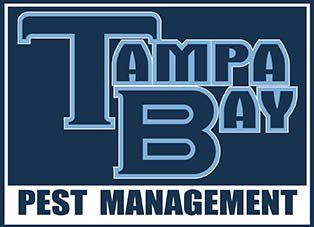Other Pest Control in Tampa Bay, FL
Below is a list of pests you may find in your Florida home or business.
MILLIPEDE
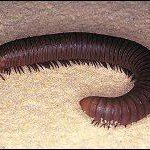
Millipedes are commonly referred to as "thousand leggers". They are wormlike animals with many body segments, each of which contains two pairs of legs. Millipedes feed on decaying vegetable matter often found under flower pots, stones, boards, and other landscaping where there is plenty of moisture. They tend to coil up tightly when disturbed and some can secrete a foul-smelling fluid. They are very prevalent after heavy rains or during cold weather and can readily migrate into buildings. Removal of an interior infestation can be as simple as a broom and dustpan. However, large numbers of millipedes inside typically mean surrounding areas outside the structure are breeding sites. Outdoor perimeter application of granular insecticides in compost piles, decaying vegetation, and mulch areas will usually achieve good control of millipedes.
HOUSE CRICKET
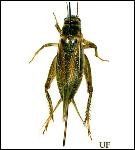
House Crickets can be a nuisance inside and around the perimeter of structures. When inside, they can be damaging to fabrics, woolens, silks, and other materials. They are often attracted to lights at night and produce an annoying chirping sound by rubbing their wings together. Crickets range in size between ½ and ¾ inches in length, are yellowish brown in color, and have long slender antennae.
The key to managing crickets is exclusion. Seal or caulk all cracks and crevices from the exterior that provides access into the building or structure. Change all exterior lighting to yellow incandescent lights that are less attractive at night. Garbage and other refuse should be kept in sealed containers and elevated whenever possible. Outside perimeter applications are effective in areas subject to moisture and heavy watering.
SCORPION
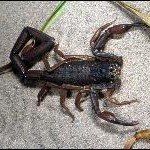
Scorpions
are flattened crablike creatures that have ten legs and an enlarged upturned tail that bears a stinger. They typically live outdoors and range in size between 1 – 4 inches in length. Scorpions commonly live a long life cycle usually ranging from 3 – 5 years. The young will climb on the back of the mother until the end of the first nymphic stage. Females are often cannibalistic and will eat their own young. Scorpions are very capable of stinging, but usually only sting when provoked or disturbed. The venom contained in the stinger is a neurotoxin, but the dose injected is usually insufficient amount to prove fatal. However, the site of the sting can remain sore and swollen for a long period of time. Scorpions are very nocturnal and prefer to hide under boards or similar debris to provide shelter. They are also found under homes or in the attic. They feed on insects and spiders.
PLASTER BAGWORM

Plaster Bagworms are similar in appearance to clothes moths. The larvae live inside a flattened gray watermelon-shaped case that is about ½ inch long. These cases are made of silk fibers, lint, paint fragments, and debris. The case has an opening on either end so that the larva can move around and feed from either end. Plaster bagworms can be easily seen on light-colored walls and more commonly hanging down from the ceiling in garages and underneath buildings. They feed on spider webs and fabrics made of natural fibers. The control of plaster bagworms is not difficult, it's based on good housekeeping and the removal of all spider webs from visible areas.
SILVERFISH

Silverfish are small, wingless pests that range in size from ¼ – ¾ inches in length. They are tapered in the back and have long antennae with three bristles, or cerci, arising from the tip of the abdomen. They live in most indoor locations including attics, basements, and wall voids. Silverfish can survive if the conditions are warm or moist and the food source is suitable. They typically feed on linens, fabrics, paper, books, and dead animals. They also will feed on any type of human food, but prefer flour, starches, and breakfast cereals. Silverfish have nocturnal habits and can be difficult to find at night. Achieving control for silverfish is based on exclusion; caulking cracks and crevices, repairing any leaking pipes or drains and storing flour and cereals in tightly sealed containers.
EARWIG
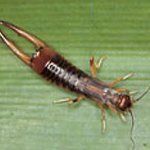
Earwigs are fast-moving, beetlelike insects that are about ½ to 1 inch in size. They are usually dark brown and have a pair of pincers at the tip of the abdomen. Earwigs are typically active at night and hide in cracks, crevices, or under bark but also can be active or seen during the day in similar places. They are also commonly found in subterranean burrows in areas with sandy or clay soils. Their diet typically consists of armyworms, aphids, mites, scales, and occasionally dead insects. They are completely harmless to humans.
The female earwig will lay about 50 tiny eggs in their burrows that hatch out after 7 days. After passing through several nymphal stages, they become adults in a little under 60 days. Earwigs are considered a mechanical fix because they are very difficult to control with chemicals. Outdoor perimeter applications in the proper areas can be efficient in controlling earwigs.
Call Us Today for a FREE Pest Control Estimate
